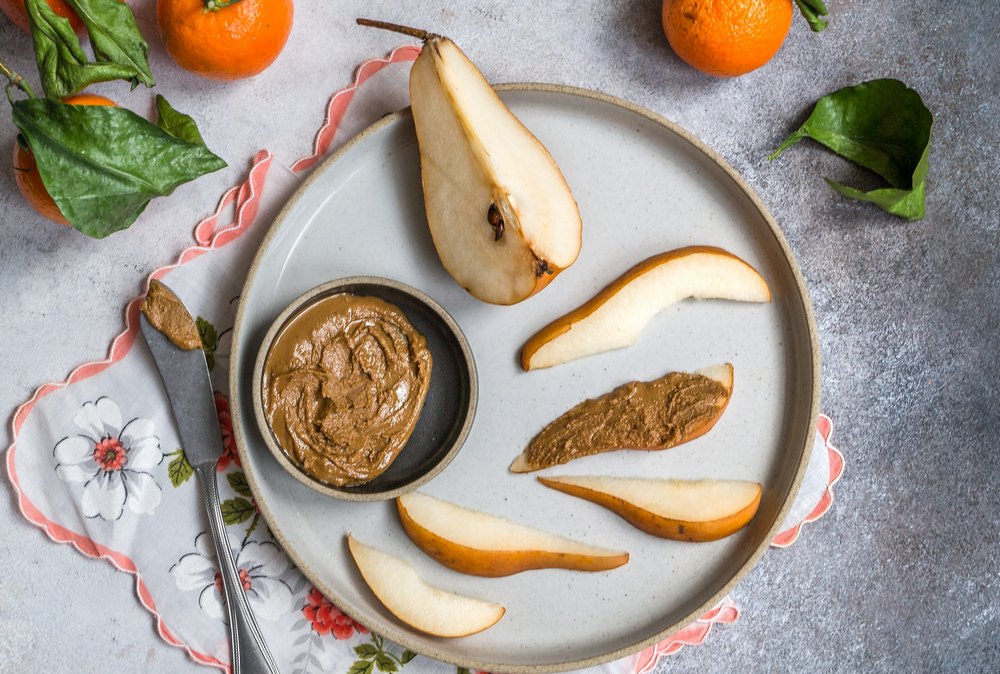Everyone loves peanut butter, children, adults, doctors, even their patients also love it. As long as you don’t have an allergy or you don’t have anyone close to you that also has an allergy, then peanut butter is very good for you. Whether you are spreading it or digging in by using a spoon, peanut butter is a good type of nutritious and delicious foods we have around.
Peanut butter is always purchased in bulk and sometimes there could be excess. This brings us to the question of how it can be stored. Can it be frozen? Peanut butter can be frozen and the flavor and texture will be kept intact. It will most likely not extend the shelf life of the peanut butter more than when kept in the refrigerator or a cupboard, so you may feel it is not worth it.
What we want to discuss in this post is to go deeply into how you can freeze and defrost peanut butter. We will also see some other methods that peanut butter can be stored and some ways you can use the peanut butter.
Freezing Peanut Butter – The Ultimate Guide
You can freeze peanut butter and it depends on how you choose to do it. If you are the type of person that has a three-year peanut butter supply jar and a big enough deep freezer, the first option you will want to do is to put the entire jars without opening inside the freezer. Ensure that you monitor the jar containing the peanut butter in your freezer for the first one day because peanut butter tends to expand as the freezing process happens and once there are no available spaces for it to expand, you are at the risk of losing the peanut butter with the jar getting broken or cracked. Though this does not happen all the time, it could be a risk.
In case what you have is an already opened peanut butter jar that you might not finish within nine months, what you have to do is to get it repackaged before you freeze it. Any food placed in a freezer will be at risk when exposed to moisture and air. The best bet is to transfer your peanut butter in a Tupperware container or freezer-safe Ziploc bag. Ensure all the air in the container or bag is removed, if you have too much space between the peanut butter and the lid, the surface can be covered with some plastic wraps to protect the peanut butter. Peanut butter can also be frozen in some small serving sizes, you can fill your nut butter in ice cube trays and proceed to freeze it. After they are frozen, crack all of them and transfer them into a Tupperware container or a Ziploc bag (freezer-safe). One ice cube is often about two peanut butter tablespoons which are the serving size that is recommended, you can keep an eye and ration the peanut butter in case you are really concerned with the willpower you have.
How Long Does It Take to Freeze Peanut Butter?
The duration of time it will take to freeze your peanut butter depends on the amount you want to be frozen in one container. To thoroughly freeze an unopened entire jar, it may be up to six hours and above. If, however, you are trying to get it frozen in single-serving sizes like using the ice cube jar, then each serving will get frozen within 45 minutes and one hour. You should note that the peanut butter type you want to freeze also affect the time it will take to freeze. For pure peanut butter, the time stated above will work perfectly. Please also note that the more the ingredients like miscellaneous preservatives, oil, salt, sugar, and some other ingredients you add to it, the less the ability to predict the freezing time. If it contains enough ingredients that are not peanuts, your peanut butter might not freeze.
How Long Does Peanut Butter Last in The Freezer?
If you seal your peanut butter properly, it should last for about six to nine months in a freezer. If you allow it to stay longer than this stated time, you risk the taste and flavor getting changed. It may lead to a freezer or stale taste.
How to Defrost Peanut Butter
To defrost peanut butter could be quite simple, all you need to do is to take the portion or container out of the freezer and leave it to thaw on a counter.
Defrosting Frozen Peanut Butter
In case you froze a whole container, then you have to defrost the whole container before you can use the peanut butter but remember that you cannot refreeze it. Ensure you follow the strategy for freezing. If the peanut butter is large, the best is to put its container on your plate and allow it to thaw inside your refrigerator overnight. Depending on your sizes, the smaller sizes take 20 minutes upward.
Defrosting Pure 100% Peanut Butter
The healthiest and more flavorful peanut butter that you can purchase is the 100% pure one. It, however, has a big flaw, the nut butter and the oil separates which could be very frustrating when you open a new peanut butter jar. It takes a long time for the nuts and oil to smoothly blend without the oil spilling over the counter but once you are able to go past that stage, then you can enjoy it.
You must pass through the same process if you are trying to thaw a whole peanut butter container of 100% purity. Peanut butter packed in small sizes must have pre-blended butter, and it will be very smooth and nice before freezing and should be thawed in a refrigerator. The separation will reduce when it is kept cold. It is very much likely that it will separate if you allow it to thaw on a counter.
Thawing Peanut Butter with Additives
Manufactured peanut butter with additives like chemicals, oils, salt, and sugars does not separate. You should be able to thaw the peanut butter in direct sunlight or a counter if you can get it to freeze. Unless you want to use your peanut butter for baking, do not rush the process of defrosting by placing it inside a microwave, peanut butter is not to be exposed to heat. Because peanut butter contains oil in huge amounts, it will burn and compromised the peanut butter’s health is exposed very quickly to heat.
Using Frozen Peanut Butter
There are several ways to use frozen peanut butter, check some of them below:
- Drop your frozen butter balls into cereal, most especially if it is raisin bran.
- Use a slice of your frozen peanut butter in the treat for PB&J without the bread by hold a dollop of jelly.
- As a treat in the summer, offer your frozen slice nut butter on a pup.
- Add your frozen peanut butter in a smoothie.
- Use it to decorate ice cream.
Alternate Ways to Store Peanut Butter
You can open your peanut butter and still keep it inside your kitchen or pantry for about three months because it has a very good shelf life. If you are yet to open the container, it can stay very fresh for about nine months. Ensure that you are storing it in a dry and cool place that is not exposed to heat or sunlight. Your opened peanut butter can stay for about nine months in a fridge instead of the regular three months.

Related Questions
Peanut butter for babies – is it safe?
You might have to be careful when giving peanut butter to a baby because you don’t know whether or not the baby is allergic to it until you try it. If your baby has health conditions or has allergies to any kind of foods, most especially eggs, the baby is likely to be allergic to nuts too.
If you want to try it on a baby, be sure you are with a doctor or an allergist to be in safe hands. You can introduce a baby of four to six months to peanut butter as long as there is no history of allergies. However, ensure that the peanut butter is watered down or smooth so that it will not choke the baby. Because peanuts can cause someone to choke and peanut butter could be sticky, you might as well monitor to make sure the baby swallows well. If it is the baby’s first time, try and watch out for any irritation indications or swelling, runny nose, or red eyes. Babies do have noses, but you know your child and should tell if it is different.
How much peanut butter can a dog have?
You have to consider the size of the dog before defining how much a dog can take. Be sure that the peanut butter only contains peanut, ensure you do not have xylitol in the mixture. Peanut butter should only make up to 10% of daily food consumption of pets which will make it just ½ a tablespoon for a small dog. A larger dog can take one tablespoon or a little more.
Can you lose weight eating peanut butter?
You can add peanut butter as a part of your healthy and balanced diet and you will still be able to lose your weight as you want. It, however, depends on how much you are taking because peanut butter is very high in fat and calories. You should also stick to peanut butter of 100% purity if you want to prevent unnecessary intake of extra oils and sugars. The healthy fats and high protein constituent could be of help by helping you satiate for a longer time and you can use it to replace other diets that are less healthy without any increase in blood sugar.
Is Peanut Butter Healthy?
You have to consider some things before you can conclude that peanut butter is healthy, though it is considered to be so. You will get monounsaturated fats and plant-based protein from fresh and organic made pure peanut butter that is made from only peanuts. Peanut contains carbohydrates and also some fibers that are good for health. It is also low in glycemic index making it unable to affect the blood sugar.
Peanut butter also contains minerals and vitamins like copper, magnesium, folate, vitamins E, B6, B3, and about ¾ of the recommended manganese for daily intakes. Be careful in the quantity and quality, many manufacturers tend to sell peanut butter at very low cost and that means the quality has been reduced. Ingredients that are not good for health are sometimes added, such as oils, chemical preservatives, and refined sugars. Peanuts can easily be contaminated with some mold classified as carcinogens. It is preferable to get peanut butter of high quality when you want to take it.
Also, take note of the quantity taken because it could be difficult to resist peanut butter and it could be addictive. Two tablespoons is often a serving size. It contains calories that could quickly pile up.


